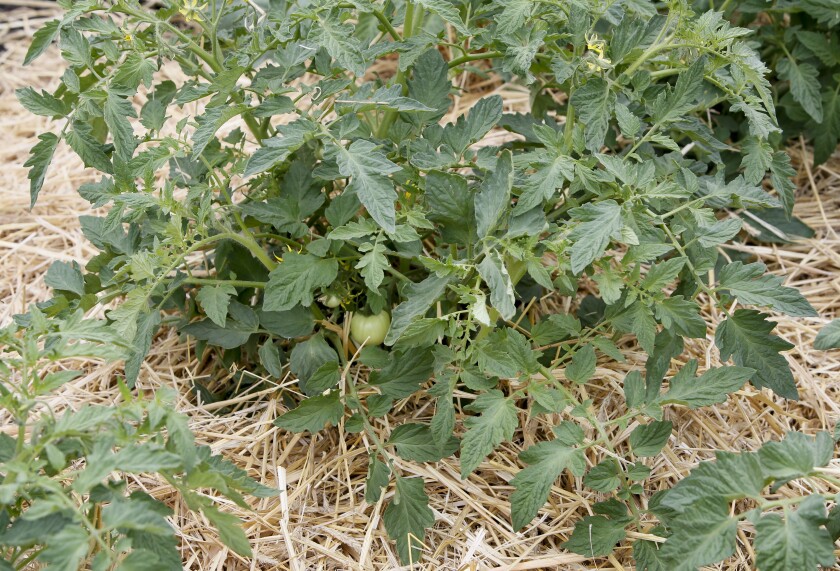Did you hear about the guy who tried to convince his wife she might be dressed too fancy to be in the garden? She wouldn’t hear of it, and she dug in her heels.
My wife, Mary, and I planted our vegetable garden over the Memorial Day weekend, and both of us were too dirt-covered to look very fancy, but it was a thrill to get the job done and we had a great time.
ADVERTISEMENT
Many gardeners remember our parents and grandparents recommending Memorial Day as the best time to plant the vegetable garden, and before it was moved to the last Monday of May in 1968, Memorial Day was observed May 30. Old-time vegetable gardeners were talking about waiting until the end of May, when soil was warm and the chance of late frost was minimal.
If we followed Memorial Day as a guideline this year, the May 26 date was about four days earlier than the time-honored planting date.
With that in mind, if you haven’t planted your vegetable garden yet, you’re still well within the ballpark.
Besides getting vegetable gardens planted in a timely manner, other tips will get the garden off to a good start.
- Recent spring rains have produced decent subsoil moisture in much of the region. If rainfall becomes scarce a week or two after planting, consider gently sprinkling the garden, applying about a quarter to a half-inch of water to replenish the surface moisture. Many garden seeds are planted shallowly, and a quarter-inch of moisture in a timely manner can boost emergence and prevent tiny seedlings from withering from lack of moisture, especially in hot, windy weather.
- Vegetables planted from starter transplants can be individually watered to help them establish and keep them growing healthy if rainfall isn’t sufficient after planting.
- Soil crusting can diminish seedling emergence on tiny seeds like carrots or lettuce. Some gardeners shield the soil with boards, cardboard or other material, removing them just as soon as seedlings appear. A light mulch of dried, untreated grass clippings, compost or peatmoss can also keep the soil surface moist and crust-free for better seedling growth.
- Murphy’s law of seeding states: “If you plant seeds thick, every one will germinate. If you attempt to prevent crowding by spacing the seeds, germination will be so poor the row looks empty.” Vegetables need space to develop. If too crowded, the plants remain tiny with poor production, including carrot, radish, lettuce, spinach, kohlrabi, beet, parsnip, onions and others.

- When seeded vegetables emerge too thickly, the task of giving them space is called “thinning.” When thinning carrot, beet, parsnip, radish and lettuce, allow at least an inch or more between plants. Excess seedlings can be pulled gently or cut, and eaten in salads or on sandwiches.
- Weeding is vital to garden success, and it’s not a bad job at all, if weeds are pulled while tiny. Some weed types emerge from the ground before the vegetables, and that’s why I mark each end of our vegetable rows with a stake so I know where the vegetables will appear. If weeds sprout first, I can clean between rows if I know exactly where the row extends.
- Hoeing, pulling and mulching are the best methods of weed control in vegetables.
- Once vegetables are up and growing, mulching helps conserve moisture and reduces weeding.
- Mulching around tomato plants saves moisture, controls weeds and reduces blossom end rot, but tomato mulching should wait until soil has warmed, usually sometime in mid-to-late June. Mulching earlier can keep soil chilly, which is the opposite of what tomatoes need for full production. Mulch options include straw, hay, leaves, compost, and dried grass clippings from lawns not treated with herbicides.
- Like most crops, vegetables produce better when fertilized, which provides the nutrition needed for optimum size and quality. Fertilizer choices include all-purpose granular 10-10-10 and water-soluble types like Miracle-Gro. Some fertilizers are tweaked specifically for crops like tomatoes. Follow all label directions for application rate and frequency.
- Organic fertilizers are an alternative to synthetic types, and often provide soil conditioning benefits also, such as manure and compost.
- To minimize blossom end rot of tomatoes, keep soil uniformly moist when fruits are forming so the plant can access the calcium that’s found in most regional soils.













